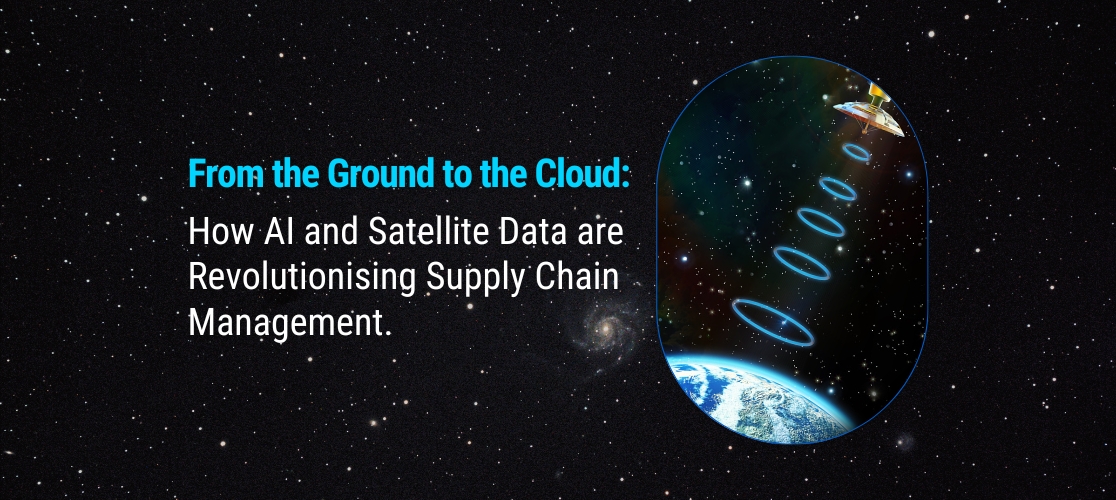07 April 2023
From the Ground to the Cloud: How AI and Satellite Data are Revolutionising Supply Chain Management.

The combination of AI and satellite data is revolutionising supply chain management. The use of these technologies can help organisations to track and optimise the movement of goods, reduce costs, and improve the efficiency and speed of operations. In this article, we will explore how AI and satellite data are changing the face of supply chain management.
Real-time tracking of shipments One of the most significant benefits of using satellite data and AI in supply chain management is real-time tracking of shipments. Satellites can track the location and movement of cargo ships, trucks, and airplanes, providing real-time information on the progress of shipments. This information can be combined with AI-powered analytics to predict delivery times and optimise routes, reducing delays and improving the efficiency of the supply chain.
Predictive maintenance of equipment AI can also be used to monitor equipment and predict when maintenance is required. This information can be used to schedule maintenance proactively, reducing the risk of breakdowns and unplanned downtime. Satellite data can be used to monitor the condition of equipment located in remote locations, making it easier to manage maintenance proactively and prevent downtime.
Real-time inventory management AI can also be used to optimise inventory management by providing real-time information on inventory levels and demand. This information can be used to predict demand, optimise stock levels, and prevent stockouts. Satellite data can be used to track inventory located in remote locations, making it easier to manage inventory levels across the supply chain.
Demand forecasting AI and satellite data can be used to predict demand and optimise production accordingly. By analysing historical data and trends, AI algorithms can predict future demand, allowing companies to adjust production levels and avoid overproduction. Satellite data can be used to monitor weather patterns, which can affect demand for certain products, making it easier to adjust production levels accordingly.
Risk management AI and satellite data can be used to manage risk in the supply chain. By analysing data on weather patterns, political instability, and other factors, AI algorithms can predict the likelihood of supply chain disruptions. This information can be used to develop contingency plans and mitigate the impact of disruptions on the supply chain.
Sustainability and environmental impact AI and satellite data can also be used to optimise the sustainability and environmental impact of the supply chain. By tracking the movement of goods, organisations can identify opportunities to reduce emissions and optimise routes to reduce carbon footprint. AI algorithms can also be used to optimise packaging and reduce waste, leading to a more sustainable supply chain.
In conclusion, AI and satellite data are revolutionising supply chain management. The use of these technologies can help organisations to track and optimise the movement of goods, reduce costs, and improve the efficiency and speed of operations. Real-time tracking of shipments, predictive maintenance of equipment, real-time inventory management, demand forecasting, risk management, and sustainability are just a few of the areas where AI and satellite data are changing the face of supply chain management. As the technology continues to evolve, we can expect to see even more significant changes in the way that organisations manage their supply chains.
